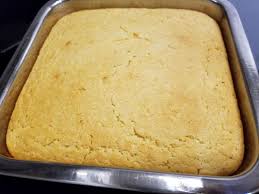Bread flour and all-purpose flour are two common types of flour used in baking. Although both are made from wheat, there are some notable differences between the two that can significantly impact the outcome of your baked goods.
At a basic level, bread flour is made from hard wheat, while all-purpose flour is made from soft wheat. Hard wheat has a higher protein content than soft wheat, which affects the gluten formation in the flour.
Here are some more detailed differences between bread flour and all-purpose flour:
-
Protein Content:
Bread flour contains a higher percentage of protein compared to all-purpose flour. Bread flour typically contains 12-14% protein, while all-purpose flour usually has around 10-12% protein. The higher protein content in bread flour leads to the development of stronger gluten networks, which is essential for the structure and texture of bread.
Bread flour is made from hard wheat varieties and has a higher protein content compared to all-purpose flour. The high protein content is what gives bread flour its unique characteristics and makes it the preferred choice for yeast-based bread recipes. The gluten formation in bread flour is strong, which allows the dough to rise more and produce a chewier texture in the final product.
-
Gluten Formation:
Gluten is a protein that forms when flour is mixed with liquid. When gluten develops, it creates a network that gives bread its structure and texture. The higher protein content in bread flour results in stronger gluten formation, which produces a chewier, denser texture in baked goods.
All-purpose flour, on the other hand, produces weaker gluten formation, resulting in a lighter, more tender texture in baked goods. It is a good choice for cakes, cookies, and other baked goods that require a softer texture.
-
Absorption:
Bread flour tends to absorb more liquid than all-purpose flour due to its higher protein content. This means that recipes using bread flour may require more liquid than those using all-purpose flour to achieve the same consistency.
-
Cost:
Bread flour is generally more expensive than all-purpose flour due to the higher protein content and more extensive processing required to produce it.
-
Availability:
All-purpose flour is more readily available in most grocery stores, while bread flour may require a trip to a specialty baking store or online order.
When choosing between bread flour and all-purpose flour, it’s important to consider the type of baked goods you plan to make. If you’re baking bread or pizza dough, using bread flour will result in a chewier texture and more substantial crumb. If you’re making cakes, cookies, or other tender baked goods, all-purpose flour is a better choice.
When it comes to baking, the type of flour used is crucial to achieving the desired results. While bread flour and all-purpose flour may seem interchangeable, their unique characteristics can make a significant difference in the final product.
Bread Flour With High Protein
Bread flour, with its high protein content and strong gluten formation, is the preferred choice for yeast-based bread recipes. The high protein content helps the bread dough to rise better, creating a more substantial, chewier texture. On the other hand, all-purpose flour is more flexible and can be used for a wide range of Roasted goods, including cakes, cookies, and pastries.
When using bread flour, it’s crucial to understand that it absorbs more liquid than all-purpose flour due to its higher protein content. Therefore, you may need to adjust the amount of liquid in your recipe when using bread flour to achieve the desired consistency.
One of the benefits of using all-purpose flour is that it’s more readily available in most grocery stores compared to bread flour. All-purpose flour is also more affordable and can be used for various recipes, making it a more versatile option.
In conclusion, while both bread flour and all-purpose flour are made from wheat, they differ significantly in their protein content, gluten formation, absorption, cost, and availability. Understanding these differences can help you make the best choice for your specific baking needs. Understanding their unique characteristics can help you achieve the desired results in your baked goods. Bread flour is ideal for recipes that require significant gluten development, while all-purpose flour is a versatile option that can be used for a wide range of baked goods.





